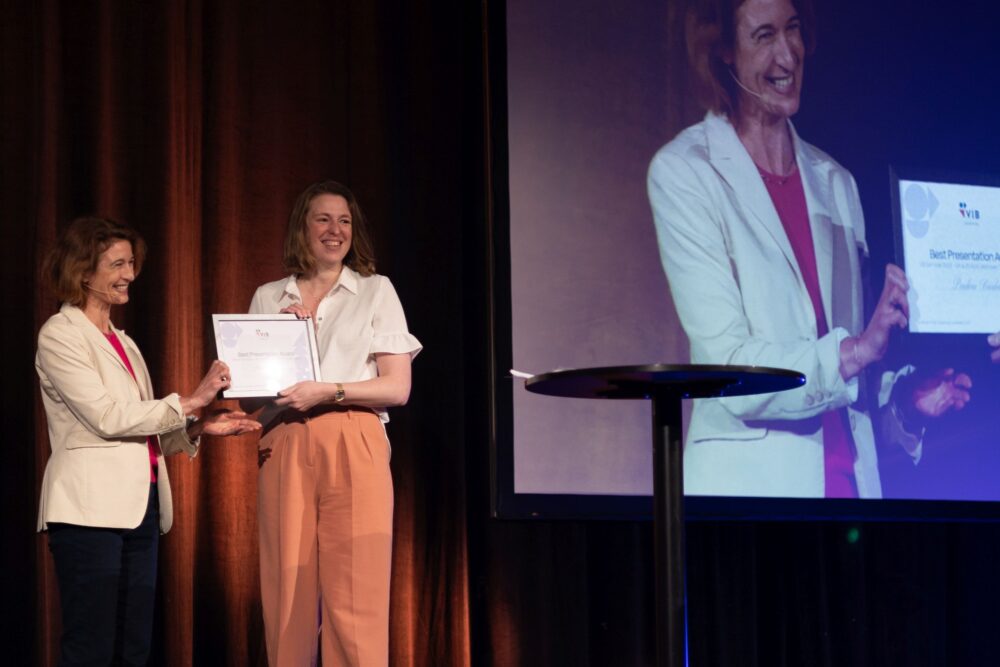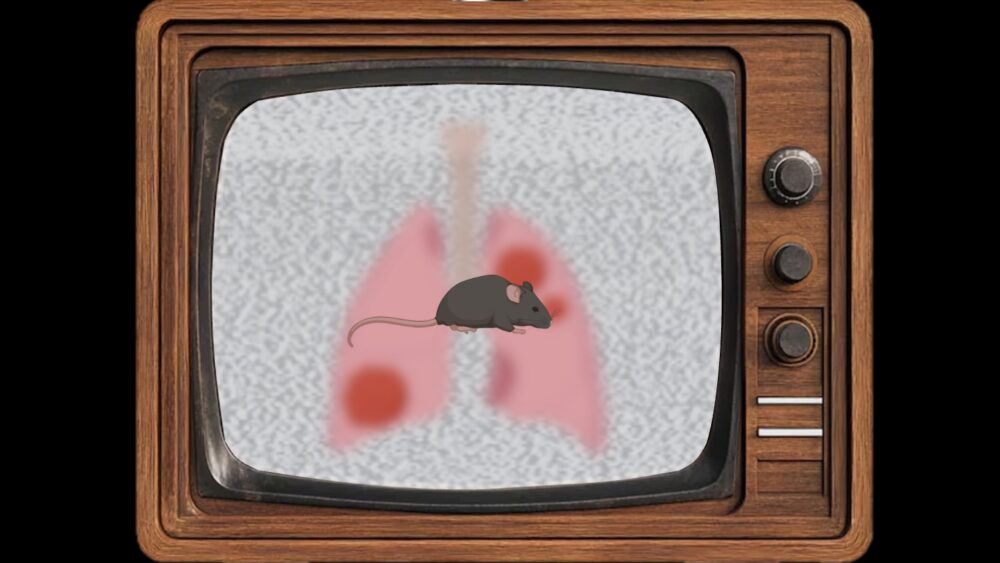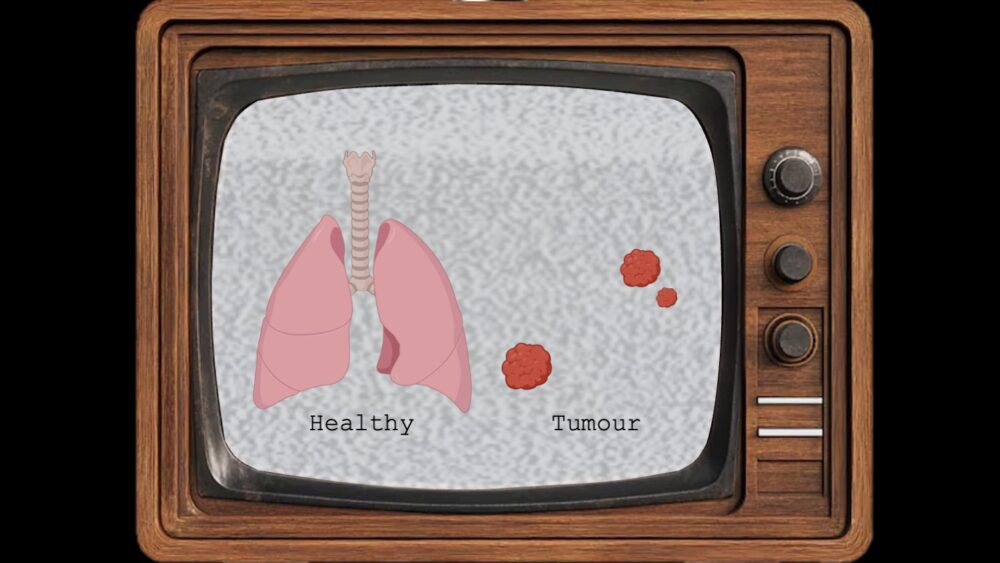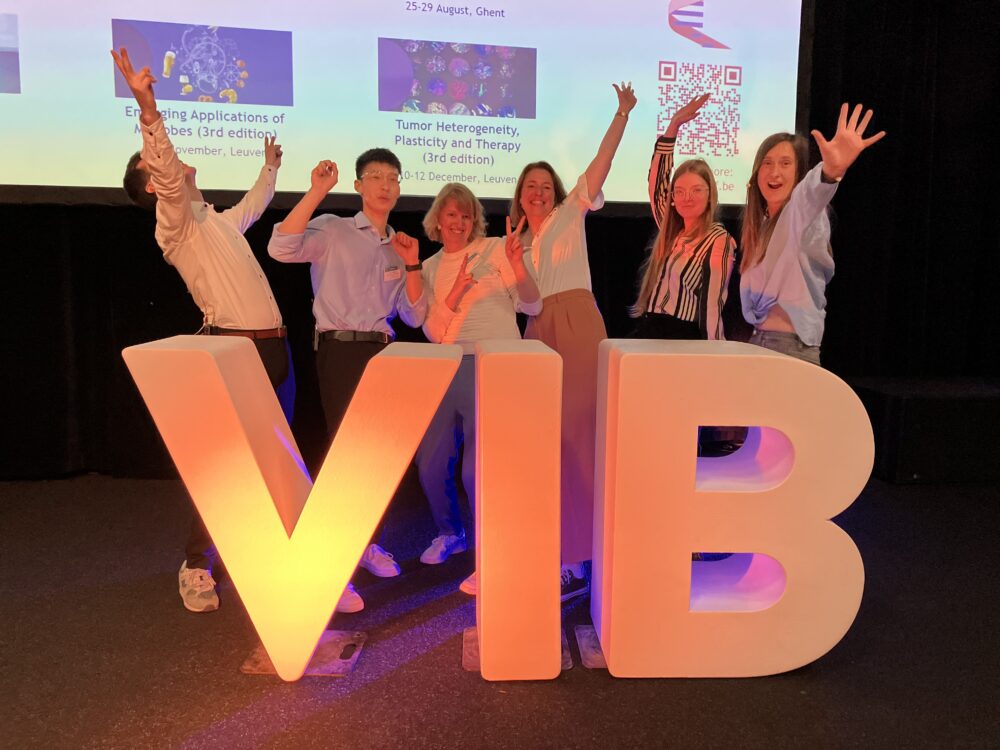How to impress 700 people with your science talk? Pauline did it.
At the annual VIB Seminar, the program ends with a bang: Scientists on Stage.
Six researchers.
Eight minutes each.
An audience of 700 people.
They compete for the best science presentation, the day after the legendary VIB party.
That means
- a crowd that’s tired,
- full of information, and
- hard to impress.
No pressure, right?
So, how do you stand out on a stage like that?
Ask Pauline Bardet. She won.

Meet the winner
Pauline Bardet is a PhD student at the VIB Center for Inflammation Research. Her pitch combined science, story, and style.
She opened with a metaphor of a blurry television screen to describe current mouse models in cancer research.

Then she introduced her solution: a new model that gives a sharp image of the tumour and surrounding tissue, just like switching to HD.

Her message was crystal clear:
“To create better lung cancer therapies, we need to understand which immune cells help the tumour grow. For that, I built a mouse model that gives us a sharper view, so we can zoom in and find the main contributors.”
No jargon, no data overload. Just one problem, one solution, and one clear benefit. And that’s what made her talk stand out.
“At first, I panicked. Then I enjoyed it.”
We asked Pauline what the experience was like:
“The first 20 seconds were the worst. I kept thinking: Why did I sign up for this? But once I started talking, I was just enjoying it. Even with a small technical glitch, I stayed calm. It felt like a victory.”
And the impact? It didn’t end with the applause:
“Afterwards, people came up to me and said: Hey, weren’t you the one from Scientists on Stage? That makes networking so much easier. It’s an icebreaker.”

How do you prepare for a stage like that?
Before stepping on stage, the participants followed a training program at The Floor is Yours. It included:
- A workshop on how to present with impact, full of practical tips tailored to their topic.
- A try-out session to get feedback on structure, visuals, and delivery.
Pauline shared which tip helped her most:
“First, understand your audience, then start working on your pitch.
And secondly, start small: begin with a simple, clear version, and build from there. It feels much less overwhelming than starting with the full presentation.”
Want to stand out like Pauline?
Start with understanding what your audience cares about, and focus on one key message. Then, you can design a short pitch.
We help participants build it up like this:
Problem → Solution → Benefit
Once your pitch is solid, you can think about how to grab your audience’s attention and add extra details about your methods, findings, or applications.
That’s how you turn complex research into a clear and memorable story.
So if you ever find yourself facing 700 people who are tired, distracted, and already packed with information, remember this:
Clarity beats complexity, story beats data, and a good metaphor, like a blurry TV screen, might just win you the room.
Want help preparing your next big talk?
Check out our workshops: Presenting with Impact or Pitch Your Research.